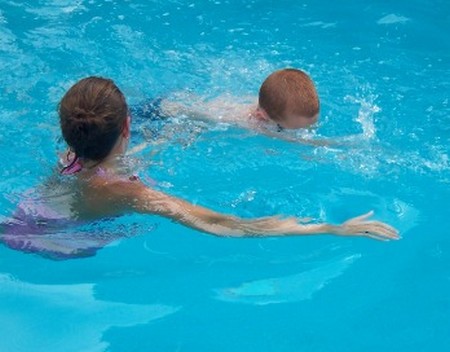Freestyle swimming is the most popular stroke, perhaps because it is the fastest form of swimming known to man. The 100 meter freestyle nearly equals the glamour of the 100 meter dash in the Olympics.
The general public is not aware that in swimming competitions from local club level to the Olympics, contestants compete in five types of swimming events. Five? Yes—butterfly, backstroke, breaststroke, freestyle, and the medley, which consists of all four swimming strokes.
All learners should be taught all the strokes. By mastering all, they can specialize in the stroke that suits them best later on. And when in training, it breaks the monotony of the long miles to be able to switch from one stroke to the other. A freestyler, for instance, would gain strength and stamina from doing work on the butterfly. Today, swimming coaches have their pupils do 75 percent of the work in freestyle and the rest is made up of other strokes. Toward main competition they swim more on their individual stroke.
Arm Movements
In the early stages children are taught to swim the freestyle with their arms straight. This way they stretch out in front, reaching deep down and recovering their arms at the very end of the stroke. The more advanced swimmers bring their arms forward slightly bent. The rule is that the elbow should always be higher than the rest of the arm. On entering the water, the wrist should be firm, but not stiff, and the arm should pull along the center line of the body. When under the water, the arm doesn’t pull down on a totally straight line, but halfway through the stroke it bends as if the swimmer is writing a big S-shape with his hands.
When correcting a freestyle swimmer’s stroke, stand in front of him and watch the entry and the pull from there. If the arm swings out to the side under the water, correct it immediately because it has to stay in the center.
Breathing
There are three types of breathing: breathing on every stroke, breathing on every three (bilateral), and breathing on every four. When the swimmer has to do some long, slow swimming, she could use breathing on every four. If the swimmer swims unevenly, rolls her body, or doesn’t lift one arm out as much as the other, she should do her training doing bilateral breathing. When racing a short distance, the swimmer needs a lot of oxygen, so in these cases she breathes on every stroke.
